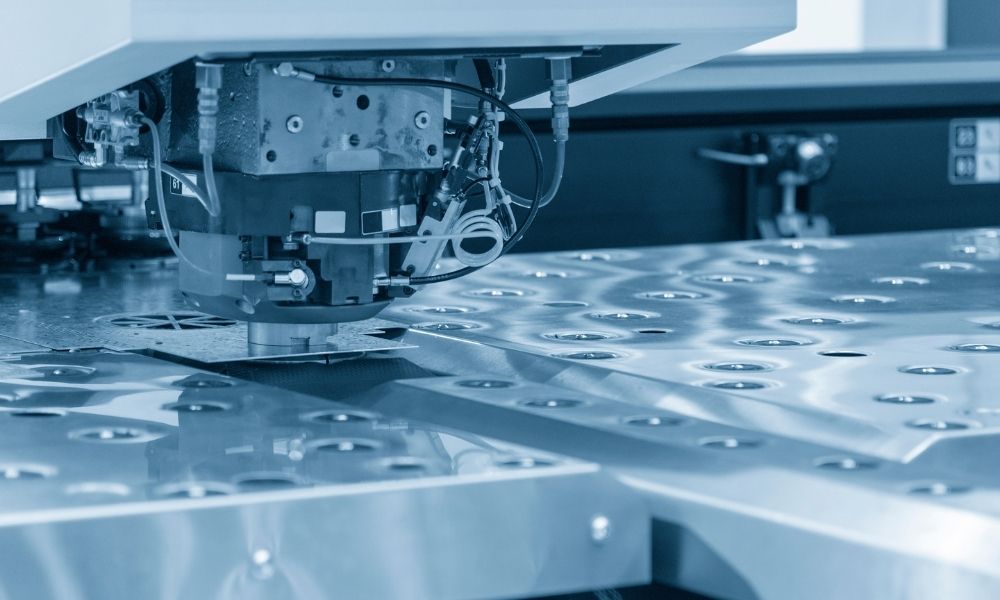Successfully Added
The product is added to your quote.


A servo drive is the heart of your CNC equipment. When it goes out, it brings your entire operation to a screeching halt. Hopefully, you can get the servo back online with luck and some experienced troubleshooting, but sometimes there is simply no salvaging it.
When you’re in this situation, there is only one option available: replacing the drive completely. However, replacing any part of heavy equipment can be a complex and dangerous process, and this is especially true with servos drives. Knowing how to replace a CNC servo drive correctly is key.
As we said, there are many times when you can simply troubleshoot issues with a servo drive and repair them without the hassle of replacing them. However, at a certain point, replacement is necessary. Here are a few tell-tale signs that you are to that point with your drive.
The most obvious sign that a servo needs to be replaced is when there is damage to the device itself. This kind of issue is usually obvious, even without an in-depth inspection by a professional. A few common types of structural damage to servo drives and motors include:
In some cases, this damage may be purely aesthetic. However, if you notice changes in the machine’s performance accompanying it, there is a high chance the machine needs to be replaced.
Some types of damage aren’t as obvious from looking at the machine from the outside. However, they will often make themselves known in other ways. The amount of noise a machine makes is one common sign of a problem.
Machines with internal damage will often make a loud chattering or buzzing noise, often due to an issue in how the components are placed or with the machine’s feedback function. In other cases, machines may make a high-pitched squealing noise. This is often a sign of even more serious issues such as motor failure.
Inside of a piece of machinery are countless pieces in constant motion, creating friction and heat for hours at a time. If it wasn’t for the cooling devices installed in this equipment, machines would overheat, damaging circuitry and even potentially causing dangerous fires and explosions.
When machines give off excessive amounts of heat, that is typically a sign that there is something wrong with the machine’s cooling devices. In some cases, this may be a simple matter of replacing a fan or adding new coolant. But if these components are beyond repair, you will have to replace the entire drive for the integrity of the machine and the safety of your workers.
Another sign of a machine overheating is the presence of a strong burning scent or the machine smoking. This may also be caused by various other things, however. For instance, the cooling system becoming blocked, worn bearings, or bearings that are not properly placed. However, if this kind of troubleshooting doesn’t work, consider replacing the piece.
When you go to the grocery store, every food product on the shelf has a “Best if used by—” date stamped on it. But those outside the electronics sector may not realize that electronic components also have a similar date. These date codes help with things like component traceability as well as the solderability of the parts.
While this was a far greater concern for manufacturers before the 1980s, it should still be noted for manufacturers today. Drives with older components are more likely to experience detrimental corrosion. So, it’s a good idea to at least be aware of the component dates of your equipment parts.
Once you have determined that you need to replace the servo, you have to decide which device to replace the old component with. This can be challenging since, in many cases, a new servo drive isn’t an exact match with the machine. Keep these following factors in mind when choosing a new machine:
Naturally, you’ll want your new servo drive to physically fit into your machinery, so looking at the dimensions of the drive is a good place to start. However, it’s not only about the size of the machine, but also its mounting pattern. This pattern will determine how well you will be able to fit it into the inner workings of the machine.
Not all machinery is built the same, and neither are the servo drives that help power them. When you are looking at servo drives, their performance specifications are almost more important than the size of the machine itself.
The most important factors to consider when choosing your replacement servo drive are torque, speed rate, and electrical needs. If a device matches only one of these factors and not in all of them, it may greatly impact the performance of the drive.
Knowing exactly how to replace a CNC servo drive depends on the CNC machinery that you are working with. The device’s manual and manufacturer can typically offer insights into this. However, we can still offer key information that can apply to replacing a CNC servo drive in any device.
Factors to consider when replacing a CNC servo include:
As mentioned, this process can be incredibly complicated and even dangerous. If you are not experienced in electrical work, consider having a professional complete this task for you.
And speaking of professionals, allow us to offer our professional touch to help you find the quality CNC machine replacement parts you need for your equipment, including servo drives.
